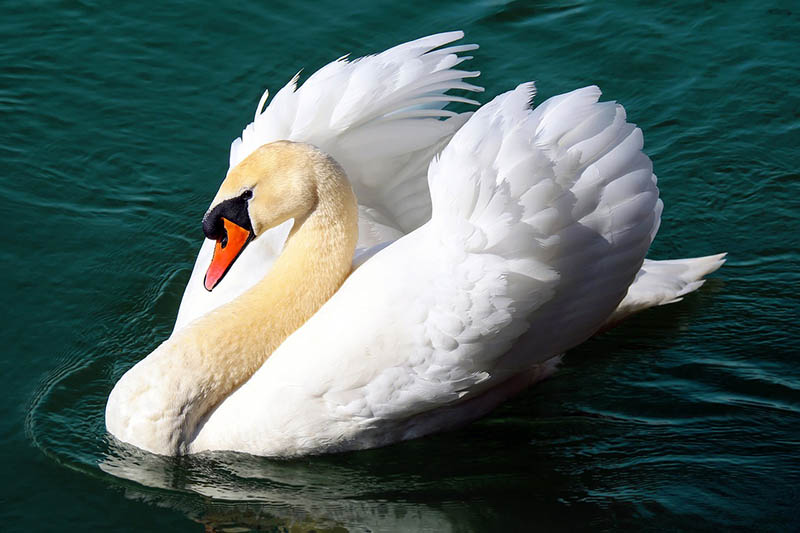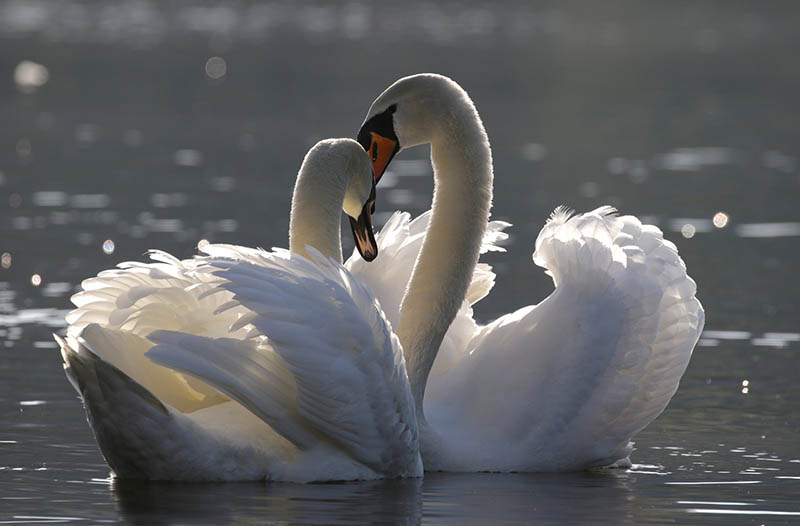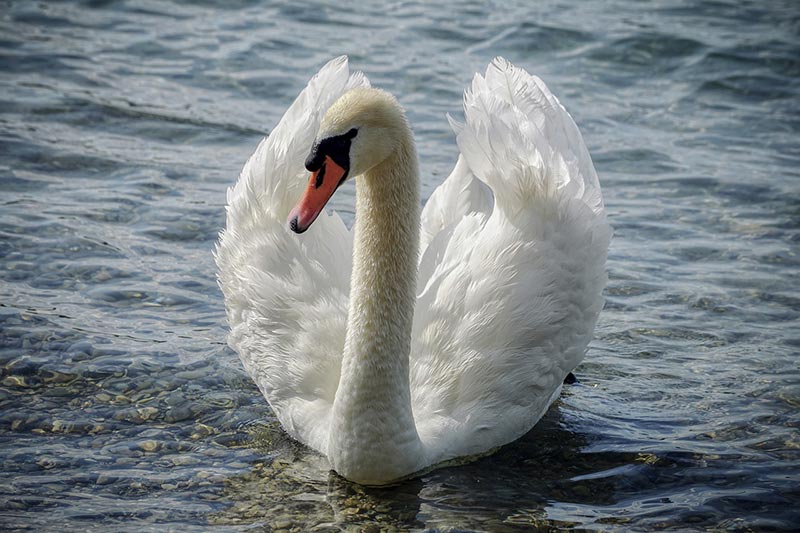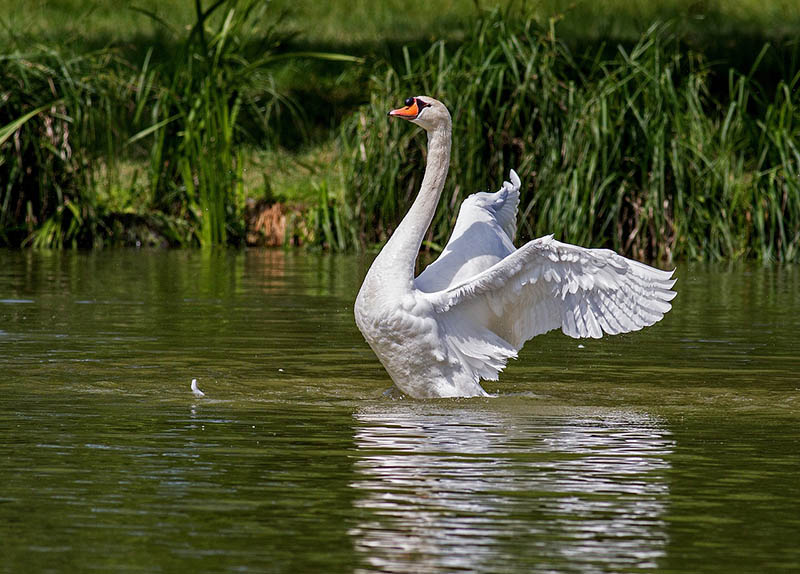How Long Do Swans Live? (Swan Lifespan)
Last Updated on

Swans are highly intelligent, graceful birds that raise a lot of curiosity about their lifestyle and habits. They are one of the largest and heaviest birds on the planet. Only seven swan species are currently known to humanity, making them even more interesting to us.
When it comes to the things about swans people would like to know, one of the main questions most would like an answer to is how long swans live. Although their lifespan can vary due to various reasons, we will try to provide you with all the details about their longevity.
Keep reading to learn more about the average lifespan of a swan.

What’s the Average Lifespan of a Swan?
The average lifespan of a swan can differ, primarily depending on the environment where the swan lives. In protected environments, swans have an average lifespan of 20 to 30 years. However, in the wilderness, their average lifespan is around 12 years.
The average swan lifespan also varies from species to species, and some species can live longer than others:
| Swan species | Average lifespan in the wilderness | Average lifespan in captivity |
| Bewick’s Swan | 10 years | 20+ years |
| Black Swan | 40 years | 40+ years |
| Black-necked Swan | 15 years | 6.8 years |
| Mute Swan | 20 years | 30 years |
| Trumpeter Swan | 24 years | 33 years |
| Tundra Swan | 10 years | 20+ years |
| Whooper Swan | 9 years | 20+ years |
Typically, swans can live longer in captivity, in protected environments where they’ll be safe from outdoor conditions that can lower their lifespan. Most species tend to live shorter in the wilderness due to:
- Pollution
- Poisoning
- Insufficient food
- Injuries
- Predators
- Vandals
- Hunters
- Man-made structures
When unprotected, swans have to deal with various threats which could endanger them and make them live shorter than expected. Also, not many swans survive the first couple of days after hatching, which is why their average lifespan is generally low.
However, when the living conditions are suitable, and the swans live up to past their first months alive, they can have a long life.

Why Do Some Swans Live Longer Than Others?
There are various reasons why some swans live longer than others, so we want to point them out below.
1. Nutrition
Swans feed on aquatic vegetation, insects, leafy greens, grass, and fruits. As they spend their time on both water and land, they find food sources in both environments. Since they’re large birds, swans can eat 25% of their body weight daily.
Of course, not all swans have the same food source, so swans with more food sources and options will live longer. It’s not uncommon for swans to die from starvation if there’s insufficient food in their surroundings.
2. Environment and Conditions
Typically, the lifespan of swans will depend on their environment and the conditions they live in. Most swans living in captivity reach a longer lifespan as they’re not exposed to threats and have sufficient food.
Swans in the wilderness are constantly jeopardized by predators, hunters, and similar threats that could cost them their life.
3. Enclosure Size
When in captivity, swans commonly live much longer than in the wilderness. However, for that to be true, the enclosure size of the space they have has to be big enough for their needs. Although it’s allowed to partially domesticate these birds in certain states, due to their size, they need a large space where they’ll feel free and have enough resources to live a normal life.
4. Age
When it comes to their lifespan, age also plays a vital role in determining how long a swan will live. Most swans don’t survive the first couple of weeks after hatching. However, if a swan lives through its first year of life, it will typically have a long life, as long as the environmental conditions allow it.
5. Species and genes
Currently, there are seven swan species known to mankind. Each species has unique traits and genes, affecting various spheres of life, including their longevity. Commonly, Black Swans live the longest, while Whooper Swans and Bewick’s Swans have the shortest lifespans.

The 4 Life Stages of a Swan
When we talk about the life stages of swans leading to maturity, we can divide them into four cycles. The first stage is the egg, followed by cygnet, juvenile and mature adult.
1. Egg

Typically, a female lays between 1 and 11 eggs in one clutch. The incubation process lasts between 32 and 37 days, and the male swan is always nearby to protect the female and the eggs from predators. During this period, the female leaves the nest occasionally to feed, but she covers the eggs to keep them protected.
2. Cygnet

Once the eggs turn to cygnets, the baby chicks depend on their parents to provide them with food. They are ready to swim right away, and they’re prepared to learn to fly at around 4 months of age. Unfortunately, it’s common for many cygnets to die when learning to fly due to mishaps and crashes.
3. Juvenile

Juvenile swans can feed, swim, and fly on their own, but they’re still not mature enough to find a mate. They change their plumage once they’re around 2 years old, and they become mature adults at the age of 3.
4. Mature Adult

Once mature adults, swans will look for a mate and start breeding once they find their match. They typically have one mate for life unless something happens to them. Parent swans protect their young ones and nurture them until they’re 1 year old.

How To Estimate a Swan’s Age?
Sometimes, it can be hard to tell a swan’s age, but if you know how to look at specific details and clues, you can determine the life cycle stage the swan is in. To figure out how old your swan is, try to observe these details:
- Size: One of the most obvious indicators of a swan’s life cycle is its size. Adult swans are typically around 60 inches long and weigh around 30 pounds. Cygnets are the smallest, while juvenile swans are medium-sized compared to mature adults.
- Plumage: The color of plumage also changes over the years. An example of that is that Tundra Swan juveniles have silver plumage, which turns white in late winter. Similarly, Trumpeter Swan juveniles are dark gray and turn white in spring.
- Bill: Over the years, the bills of swans change color, so it should allow you to determine the approximate life cycle of your swan. For example, Trumpeter Swans have a bill with a black base and a pink middle that turns entirely black after their first year of life. Mute Swans have black bills when young, and they shift to orange and black once they reach maturity.

Final Thoughts
As long as swans live in an environment where they have enough food resources, they can have a long lifespan. Commonly it’s between 20 to 30 years in protected conditions and around 12 years in the wilderness. Unfortunately, when out in the wild, although that’s their natural habitat, many swans die early due to various threatening factors.
Featured Image Credit: Couleur, Pixabay
About the Author Visnja Radosavljevic
Visnja is a creative, adaptable content writer that covers various topics such as DIY, pets, home improvement, travel, gardening, and more. As a young mom and a college student, she didn’t have enough time to balance her personal and work life, so after multiple years of working a regular 9 to 5 job, she decided to pursue her passion and make a living out of it. She has been writing for a couple of years now, helping people to find valuable and interesting information online.
Related Articles:
10 Types of Hummingbirds in Arkansas (With Pictures)
8 Types of Hummingbirds in Nebraska (With Pictures)
5 Types of Hummingbirds in Idaho (With Pictures)
3 Types of Hummingbirds in Mississippi (With Pictures)
8 Types of Hummingbirds in Kansas (With Pictures)
5 Types of Hummingbirds in West Virginia (With Pictures)
5 Types of Hummingbirds in Ohio (With Pictures)
Where Do Nuthatches Nest? Nuthatch Nesting Habits Explained
